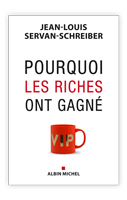Article original :
http://www.businessweek.com/finance/occupy-wall-street/archives/2011/12/the_great_compression_how_war_and_taxes_made_us_all_middle_class–and_why_thats_changed.html
The Great Compression: How War And Taxes Made Us All Middle Class, And Why That’s Changed
Posted by: Mark Gimein on December 14, 2011 at 8:30 AM

Last week, my colleague Dan Beucke wrote about the latest work of economists Thomas Picketty, Emmanuel Saez, and Stefanie Stantcheva, who presented a case for top tax rates as high as 83 percent. That rate essentially is confiscatory: the point of it really is not just to raise revenue for the government, but to put a limit on how high incomes should go. That’s an idea very foreign to the debate today—but it wasn’t always so, and if you want to understand the 20th century history of the income gap, it’s worth looking closely at the times during and after the Second World War when that kind of taxation was public policy.
But first a little back-story: The obvious question to ask about the explosion of income at the top is why, especially in the US, it has taken off so fast since the 1980s. Picketty and Saez have done a lot of work analyzing top incomes around the world, though, and they raise a related and subtly different question: not “Why has the income gap grown?” but “Why did the income gap fall dramatically during the Second World War and stay so low through the 1970s?” When it comes to income, you can think of that period as The Great Compression. And what needs explaining is not why there’s a big income gap—that’s been the situation through most of history—but why in those four decades the gap narrowed so much.
Here’s where things get interesting. Nominally, the Picketty/Saez/Stantcheva paper is about the most economically efficient tax rate for high incomes. Get past the pages of equations, though, and a lot of it is really about building an economic model to answer that question about the Great Compression. That model goes something like this:
During World War II tax rates rose to confiscatory levels because it was believed that very high incomes reflected profiteering, not real work. With the government taking so much money, managers lost their incentive to bargain for extravagant wages. High tax rates through the 1970s reinforced the social perception that there was an upper acceptable bound to incomes. Dan’s already quoted the authors’ key line on this:
“Policy makers at that time probably considered—rightly or wrongly—that at the very top of the income ladder, pay increases reflect mostly greed and socially wasteful activities rather than productive work effort.”
When tax rates got cut, things didn’t go back instantly to where they’d stood decades earlier (as they might have if people were just hiding income from the IRS). It took a long period of tax cuts and social changes for managers and stars to recognize and use their full bargaining power. That has brought us to where we are now, with the income share of the top slice of earners just about back to where it was the 1920s.

The data on this is well known, but if you haven’t seen it, here’s a chart of the share of income going to the top one percent in the US. The Great Compression is the big trough in the center.
Picketty, Saez and Stantcheva dance around explicitly taking a position on just how much of the income at the top is a product of waste and collusion among managers. There’s “rightly or wrongly,” and the next sentence about how “it’s a complicated empirical issue.” Really, though, it’s pretty clear where the authors stand. The 83 percent tax rate they talk about in their latest work is actually a bit lower than rates went in World War II and the post-war years. The National Taxpayer’s Union, an anti-tax group, has a chart of those, with top rates reaching 94 percent in the war and remaining at 91 percent until 1963.*
Rates that high are designed to discourage any company from paying the kind of salaries at which they’d kick. They’re really a de facto income cap. That’s certainly one solution to the rising income gap. I think right now, though, it’s a solution for which there will be very few takers.
Picketty, Saez, and Stantcheva might chalk that up to how thoroughly the wealthy have changed the terms of the political debate, but there’s a lot more to it than that. Just as some on the left miss the relative economic equality of the post-War years, there are plenty on the right who miss the Ozzie and Harriet mores. There’s no going back to that, for either the left or the right. And there’s justification even for those who don’t make mega-incomes to suspect that confiscatory taxes at the top of the economic scale will also mean higher taxes lower down.
Still, the 83 percent tax is a good thought experiment. The income gap can narrow only if (a) if incomes at the top get pushed down, (b) income gets redistributed through taxes or (c) wages at the bottom and middle rise a lot, and fast. The Picketty/Saez/Stantcheva paper basically argues for (a)—that’s what happened in the Great Compression. It’s pretty clear that a lot of folks would prefer (c)—in fact, I’d argue strenuously that if you really care about poverty, not just punishing the rich, you should definitely prefer it. Much of the current discussion of that, though has been little more than wishful thinking. Capping the incomes of the wealthy seems like neither a direct nor an efficient solution to the problems of the poor and middle class, but it does underline just how far we are from a better one.
*Those brackets applied to incomes of $200,000 (later $400,000) and up. There were some very high pre-war brackets, but only for a tiny slice of incomes. The highest pre-war rate of 79% only kicked in at $5,000,000.


